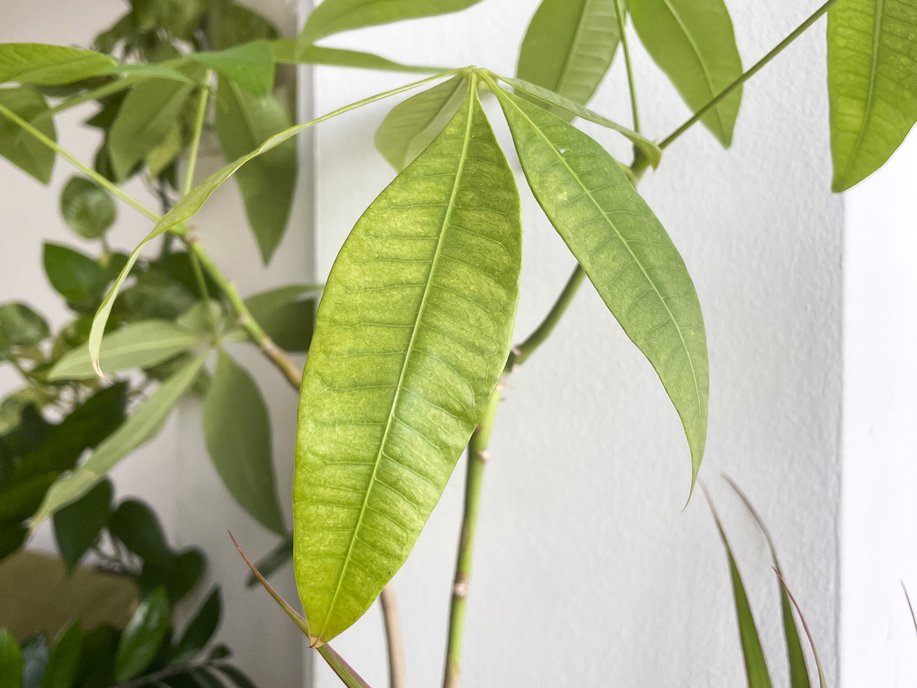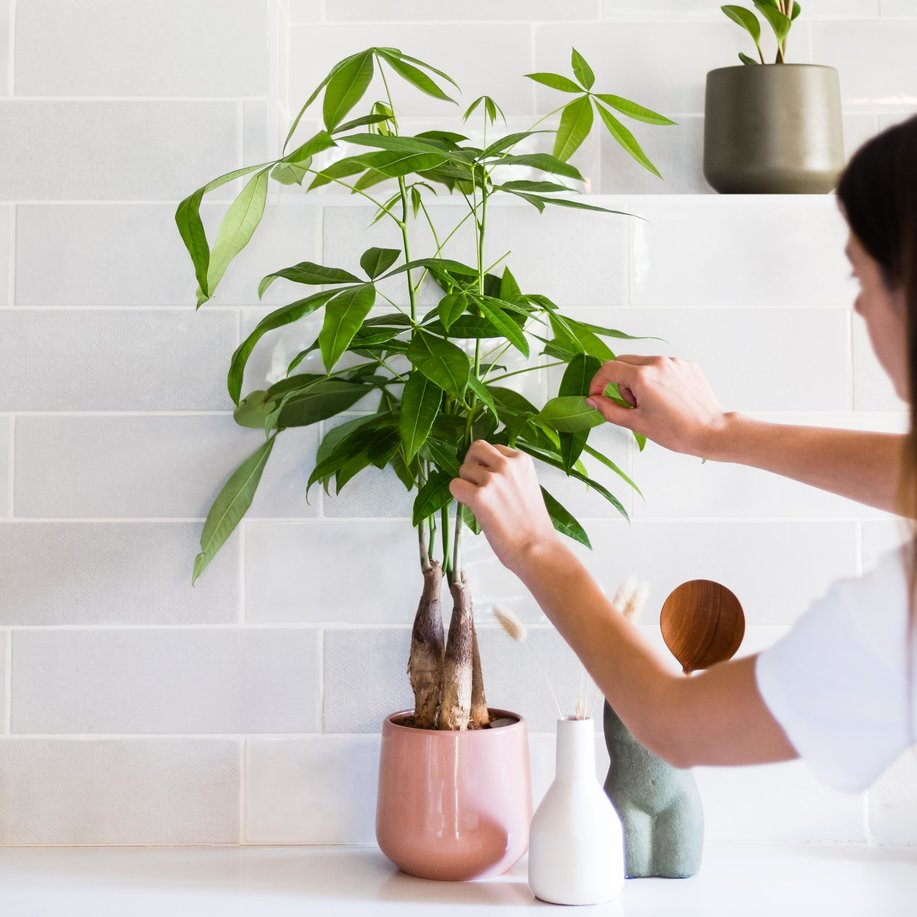Common Signs Your Money Tree is Underwatered
Money Trees or Pachira Aquatica, native to Central and South America, are known to be temperamental regarding watering. These plants require special attention and care regarding their sensitivity to moisture and humidity. Fortunately, there are telltale signs if a Money Tree is underwatered. Keep reading to learn about those signs and how to remedy an underwatered Money Tree.
1. Dry Soil
It's a delicate balance when it comes to watering your Money Tree. If left sopping wet, the plant is prone to root rot, but if the soil is parched for too long, you'll see indications that your Money Tree is underwatered.
The easiest way to know when to water a Money Tree is to check the top inch of soil. If the soil is dry, it's time to water. If it's been a while since it was last watered, the water may run out of the drainage hole immediately. Keep watering for a few seconds, then set the plant aside to allow the soil to absorb the water before giving it any more water.
2. Yellowing Leaves
One of the first signs of when to water your Money Tree is yellowing leaves. If you see yellowing leaves, you may need to investigate to ensure this isn't due to overwatering.
A simple way to tell is to check the soil and see if it's dry. If it's still moist or has been sitting in a drainage tray of excess water, the yellowing leaves are likely due to overwatering. If it's dry and you suspect the plant has been watered for a while, the yellowing leaves are likely due to underwatering and your plant could use a good drink to remedy that.

3. Browning Leaves
Browning leaves or leaves with brown spots is a sign that your Money Tree is underwatered. Take note of the brown spots and be sure there isn't a yellow halo around the spot, which would point to overwatering as the issue.
If left without water, the brown spots will become necrotic, resulting in the leaf needing to be removed. Check the soil and water if the top inch is dry. Leaves on the Money Tree should only be a vibrant green; anything else indicates distress.
4. Curling Leaves
If you notice leaves curling or wrinkling, not just drooping, you know it's time to water your Money Tree. If caught early enough, this symptom can be remedied before they start to turn brown or yellow.
You'll know when to water a Money Tree by always checking its soil. If it's dry, water thoroughly, allowing the excess to run out of the drainage hole. Just be sure not to let the plant sit in standing water, or it can lead to root rot.
5. Dropping Leaves
Dropping leaves can point to several issues, but there is a way to tell if it's due to underwatering. An underwatered Money Tree will drop leaves only on the lower half of the plant. If the dropping leaves are a symptom of another issue, the leaves will drop from anywhere on the plant.
Check the soil's moisture level to see if it's time to water the plant. If the soil is dry, thoroughly water your Money Tree, removing any excess water from the drainage tray.
Prevent Watering Issues with easyplant
If you're a plant owner who occasionally forgets to check the soil on occasion, you might wonder how often you water a Money Tree. This plant needs to be watered often and regularly. Over time you'll learn the cadence, but until then, you'll have to check the top 1 inch of soil and water when it's dry.
If you have difficulty remembering to water your plants or prefer to fuss over watering schedules, you can use an easyplant pot for your watering needs. The reservoir only needs to be filled once a month, and the built-in watering system will take care of the rest.
